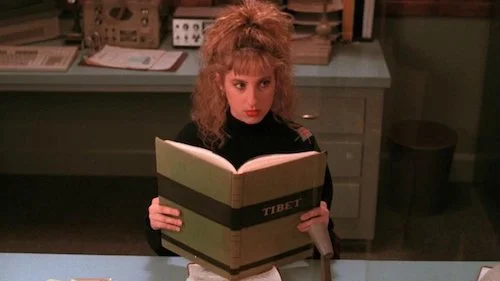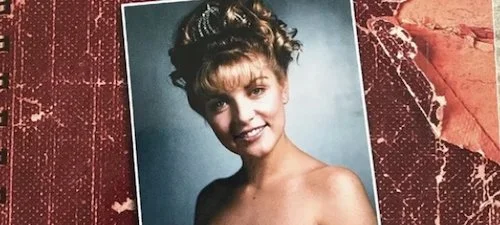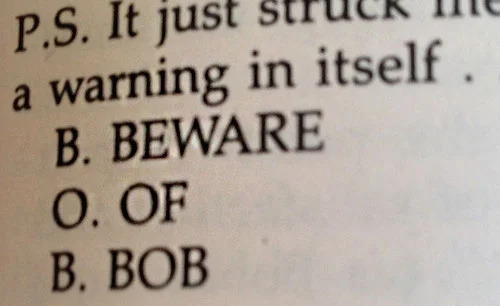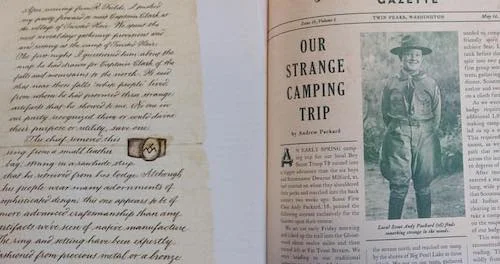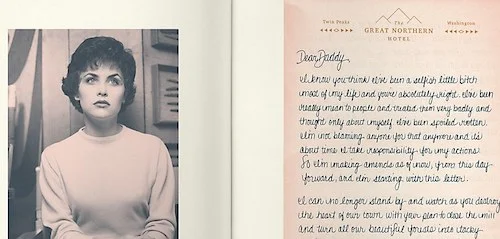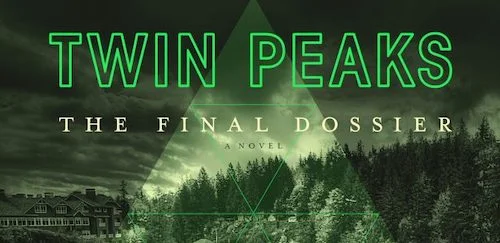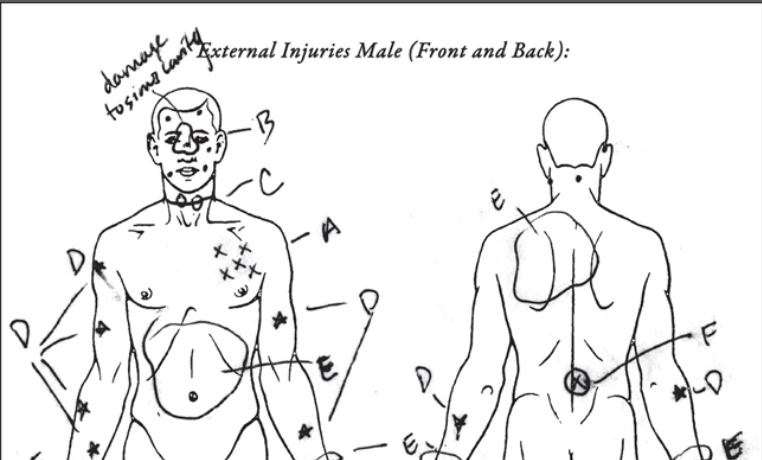Twin Peaks Week: The Official Books
The Official Books
This seems like the appropriate moment to discuss the canon books released in conjunction with the Twin Peaks universe, each at appropriate times. The first book (The Secret Diary of Laura Palmer) arrived during the height of the show’s initial popularity. The second (The Secret History of Twin Peaks) preceded the eventual miniseries by a few months, and the third book (The Final Dossier) bookended The Return by following its televised run. There was no single perfect time to cover the books, but this seems like the right time regardless, since we have covered everything but The Return.
There are also many other non-official books out there, but there just isn’t enough time in the day to go over them all. These three books are different, because they were written by those involved with the show, as a means of expanding the lore of Twin Peaks in the most accurate of ways. Yet, despite all of this, their importance really depends on who you ask. Some people disregard the existence of Twin Peaks literature altogether, either out of disinterest or out of pure disagreement. Some people swear by the literature, because the town of Twin Peaks just becomes more and more real. Obviously, I am a part of the latter category.
In case you haven’t noticed, I’ve been a little reluctant to go too deeply into the actual characters of Twin Peaks. I will still not get too deeply into them, since there are high chances that you already know all about the population of this iconic, fictional town (if you’ve made it this far, anyways). However, I did want to leave some of that discussion for this segment, because the books do a great deal of adding some oomph to why these characters tick the ways that they do. Controversies aside (we’ll get into those), these books are — in my opinion — essential reads if you are hooked on the show; whether they are necessary to consider is up to you, though.
The Secret Diary of Laura Palmer
This first book was written by Jennifer Lynch, the daughter of Twin Peaks co-creator (and main director) David Lynch. This “diary” of Laura Palmer’s was made as a means of guiding viewers into the deep heart of season two: when we finally were going to discover who killed Laura. Her diary plays an important role in the series, as the missing pages send officials on a hunt for their contents (one that even continues into the revival miniseries, well after Laura’s killer had been “found”). The idea of a diary didn’t just arrive from out of nowhere. Jennifer had a foundation to work with, and her father’s support to boot.
The diary starts in a realistic fashion: many years before it ends. Laura is only a tween; a twelve year old discovering the world through a new set of eyes. As she ages, the writing gets more pronounced. This is also when things start to get dicey, and the horrors slowly start to creep in. Between Laura facing maturation, and the evils of Bob that ended up taking her life, we come to learn that she never really got a break.
A snapshot of one of the latter pages.
Where does this leave us decades later? There’s no need to predict who the killer is, if we’ve already seen the series. On the contrary, The Secret Diary of Laura Palmer is a nice anecdote in the same way Fire Walk With Me is: it’s a time capsule of the moments when everything went south for Laura. In the same way we can revisit the show out of our own interests, we can also dive in to Laura’s thought processes in the same way. There isn’t much world-building here outside of who Laura is as a character, in more depth that we would get in any other form of visual medium or literature.
That’s the basic service you’re going to get, here. However, the connection you make with Laura is a must for any Twin Peaks aficionado. It may feel like you are prying into very private matters (trust me, once you get very familiar with the shows and film, you will see everything line up, and knowing what takes place during each of the latter chapters can be really disturbing). Outside of this detail, The Secret Diary of Laura Palmer is an engaging trinket; an extra for the most adoring fans.
The Secret History of Twin Peaks
While The Return was in slight-developmental hell (Showtime refusing David Lynch to do what he wanted, cast and crew members making viral videos to get Lynch to stay, etc.), the one thing that kept patient fans going was the release of The Secret History of Twin Peaks: one of two books by co-creator Mark Frost. While labeled a “novel”, this book (and the followup, which will be discussed later in this article) are more like case files and archival collections. Starting off with this book, which arrived late 2016, we have a “discovered” series of articles, documents, letters and more. We start way back, and I mean way back: the earliest days of the United States of America as its own declared country, and its formation into the states we have now. With the 19th century origins, we get a connection with the heritage of Twin Peaks as a town. There are ties to real-life figures (like the Lewis and Clark expedition) as a means of creating an authenticity.
Frost has a knack for creating different voices, and whoever put the work into making all of the “paper artifacts” featured throughout this book is a brilliant person (or team). Every little piece feels so contextual and genuine, you may wish to get lost in this book from time to time. The initial read is to try and find out what happened to all of your favourite key-players in the show. The follow up reads are to make the fictional town grow even more in your head.
An example of the fictional artifacts found in the book: a letter and a newspaper article.
We learn more about the characters than we ever thought we would. We explore the thorough histories of the Packard Mill (and the Martell-Packard connection), including Josie’s detailed history (and her reasons for finding solace in Twin Peaks). The realistic viewpoints are kept, so when characters inexplicably disappear within context of the town, this recollection of paper ephemera will not have any concrete answers, either. How are these people supposed to know if we (the all seeing eyes of every dimension and plane) don’t even know? As if these people are going to know Josie’s stuck in a wooden knob.
For the cliff hangers from season two, however, we do get some answers. We find out Audrey Horne survived the crazy freak explosion, but she was admitted to the hospital unconscious. However, confirmation of her well being is great, and it sent many internet fans into a tizzy by the time The Return was happening (if Audrey is, in fact, alive, why haven’t we seen her twelve episodes in yet?). It’s as if Frost and Lynch were in cahoots, like, you know, they created the show together.
A discovered letter from Audrey Horne to her father.
I find that last part interesting, because there are so many taboo moments that occur earlier on in the book that have just royally upset many people. Frost brings in conspiracies that plague the turn of the 20th century in Twin Peaks. This includes inquiries of the impact of the illuminati (and free masonry in Twin Peaks), and — gasp — alien and UFO sightings. If you know anything about Twin Peaks, there is nothing about aliens (in the typical, sci-fi sense) or systemic brotherhoods here. What I think most people missed when they read this book is that these are recollections. Frost is observing how obscurities were treated back in the ‘40s, ‘50s and ‘60s, especially when it came to sensational journalism. Of course, Frost does go heavily into all of this kind of stuff (at least one hundred pages in the digital copy), so that can be a major bother if you are misreading the contexts.
I say that, because Frost reveals the purpose of these passages in clear sight. There is an exact moment of this, actually. “Our minds are wired by nature to detect patterns” is probably the most important line in the book. Firstly, it explains all of this UFO and conspiracy nonsense. Do you assume the local newspaper will know what Judy is? What about the Black Lodge? What about Bob (I’ll be here all night, folks)? Of course not. These are explanations that UFO chasers and fear mongering media outlets are going to conjure up back in the days of the dawning of television. “Discs” are spotted in the sky, but that could be anything. “Fragments” are only ever found. Far, distant shapes and wrecked aftermaths. I know Lynch has gone on to say that Frost’s books are his expansions on the universe, but it’s as if people are forgetting that Frost didn’t take part in writing every episode of The Return. It’s funny that no actual aliens occur in the miniseries, don’t you?
Secondly, this line is great, because it ties so many thematic elements of Twin Peaks overall. The doubles. The mirroring. The embodiments. The clues. All of these are pattern based. It’s a coping mechanism we viewers have had with understanding the show on a first watch (“oh, so that is Cooper’s tulpa”). It also explains how The Secret History of Twin Peaks works. We’re mentally tying together all of these findings, because they are presented to us as one. I assume people take the UFO parts as fact, because to them, the Great Northern Hotel’s history is fact (in the context of the show). With some understanding of each individual piece’s purpose, this book becomes an ocean of the show’s lore, and a fantastic way to await The Return (when it initially came out).
Twin Peaks: The Final Dossier
Just over a year since Frost’s first book, Twin Peaks: The Final Dossier arrived. This time, The Return had came and went. This time, we didn’t have a thousand different types of ephemera “collected” by the late Major Briggs (in conjunction with the FBI), we have all of newcomer Tammy Preston’s findings throughout (and after) her time in The Return (as Gordon Cole’s newest go-to agent). Things are presented in a slightly more orderly fashion this time around. Each chapter is a different report. Reach report pertains to one person. These people include ones that aren’t even in The Return.
Did you wonder what happened to the abusive loser Leo Johnson? Well, you find everything about him here, including his autopsy report (with graphic, detailed illustrations to boot). Oddly enough, that is a bit of a rare example, because The Final Dossier is definitely more text-heavy than The Secret History; as a result, it is shorter. This book is much more to-the-point, as a means of providing a singular perspective on the many outcomes and concerns that have taken place throughout the entire show’s run.
Leo Johnson’s autopsy report in great detail.
This is perhaps for two reasons. Frost wanted The Final Dossier to be more of an actual follow up to The Return than The Secret History was an expansion of the entire town. This was the dessert after one exciting 2017 run. Frost also had many things he wanted to share about the current world this time around. This includes a reference to Donald Trump with the possession of the green ring (as if he is controlled by Bob; I mean it isn’t a stretch). There is also climate awareness, and other political discussions. These are usually very slight, and not the main focus of each segment; they are fun anecdotes, though (and definitely more of an authorial touch than The Secret History may have had).
Otherwise, you get the right answers out of The Final Dossier. Do we fully get what happened to Dale Cooper at the very end of The Return? That’s an ambiguity Lynch wanted us all to have, so we don’t really get an answer here. We do see circumstances change a little bit, as if the removal of Laura Palmer’s death at the end of The Return did take place. What about Audrey Horne (the target of many open-ended inquiries, evidently)? Well, we find here that she was locked away like many of us assumed by the miniseries’ end. When it comes to the affected people of Twin Peaks as a town, you’re sure to get at least some sort of closure. For Cooper’s departure and these kinds of oddities, maybe not.
Overall, you’re bound to get something different out of these three pseudo-novels. You dive into Laura’s psyche in her diary. You experience Twin Peaks as if it were a real town in its secret history. You understand the outcomes of various citizens in a professional sense in the last dossier. I find these works to be vital. They were made by people heavily connected to the show (or simply by one of the actual creators of the show, really). Each piece of literature brings something of value (essential, or additional) to the series. You can experience the phenomenon in a different medium, too. If Twin Peaks is willing to break television and film, why can’t it find a home on paper, too?
Andreas Babiolakis has a Masters degree in Film and Photography Preservation and Collections management from Ryerson University, as well as a Bachelors degree in Cinema Studies from York University. His favourite times of year are the Criterion Collection flash sales and the annual Toronto International Film Festival.


